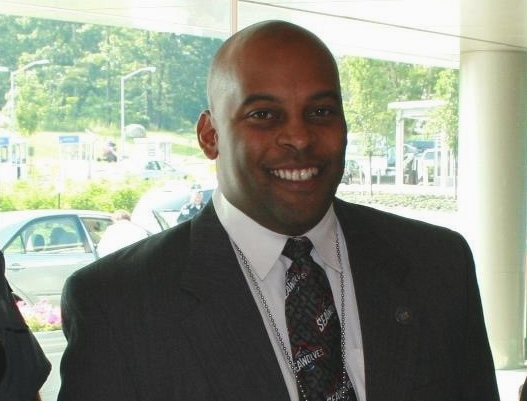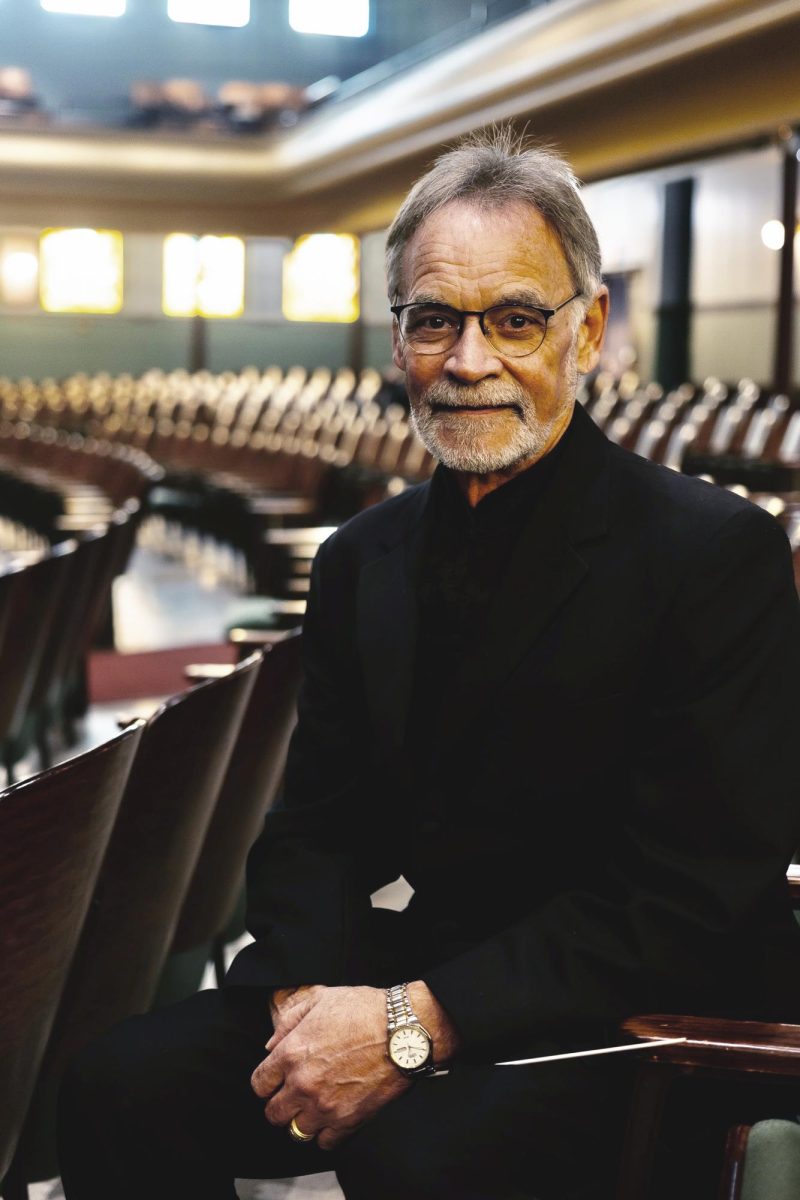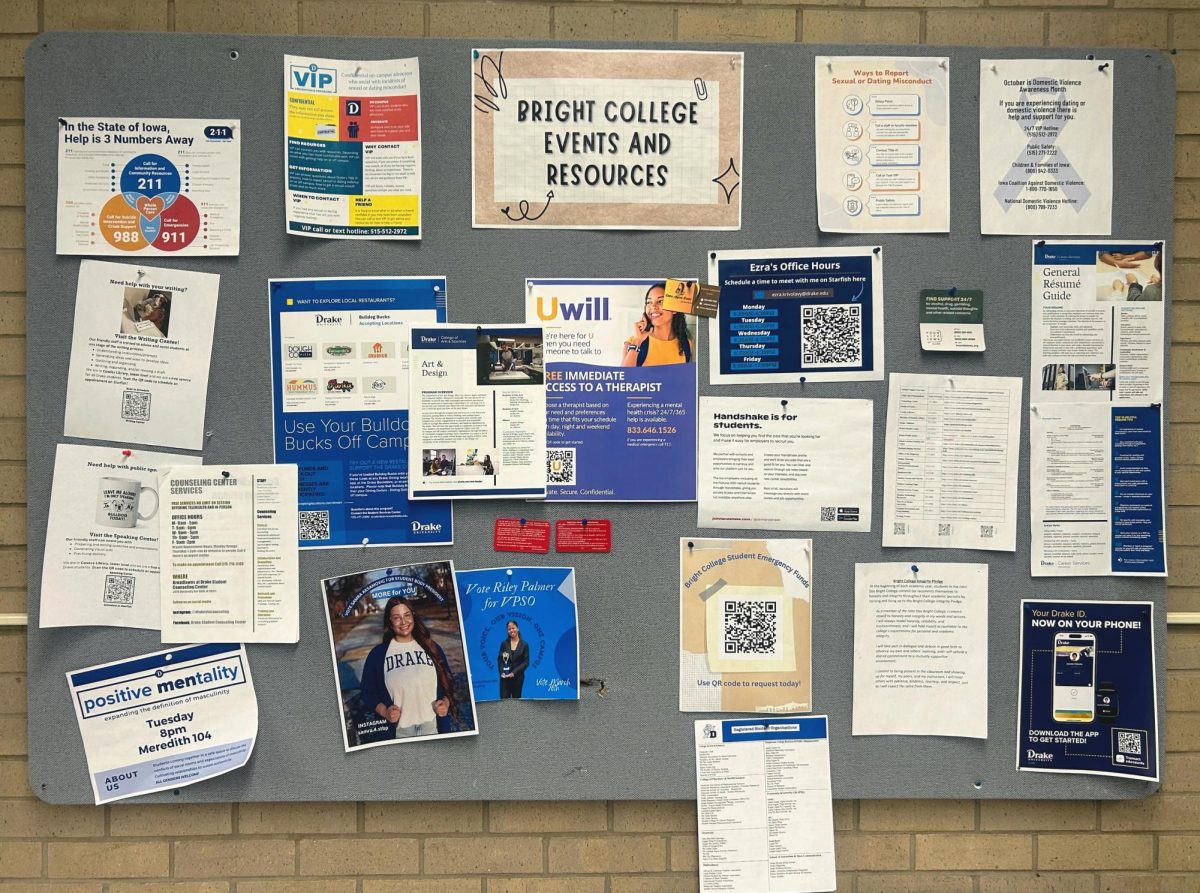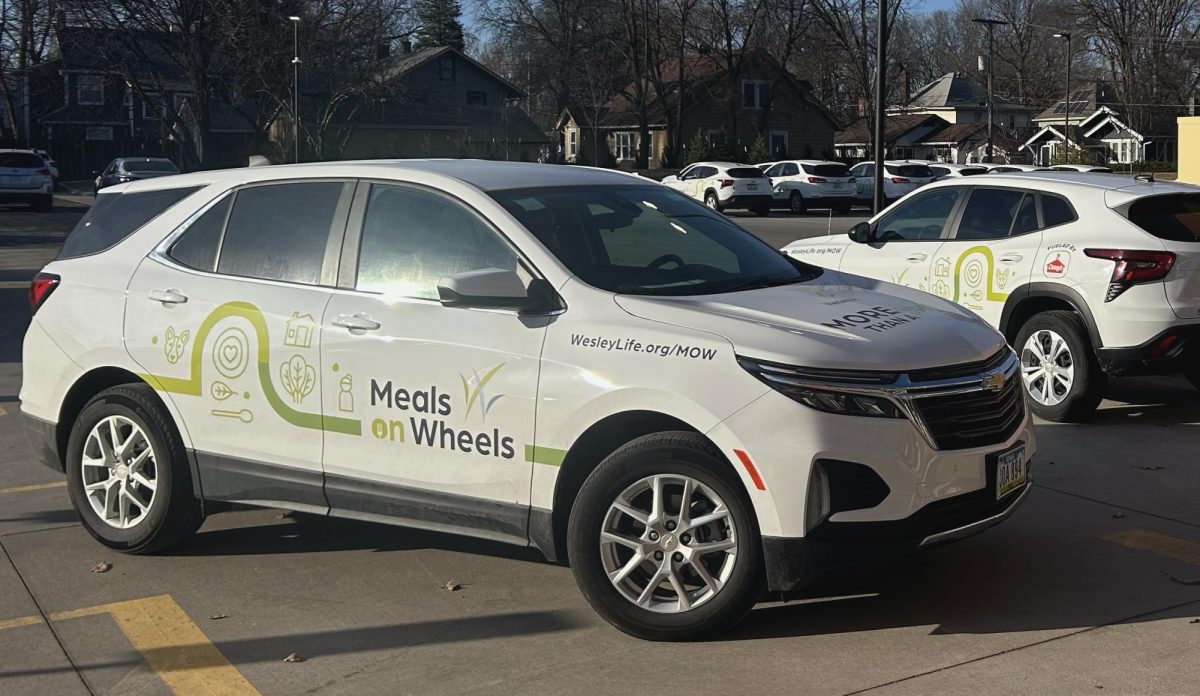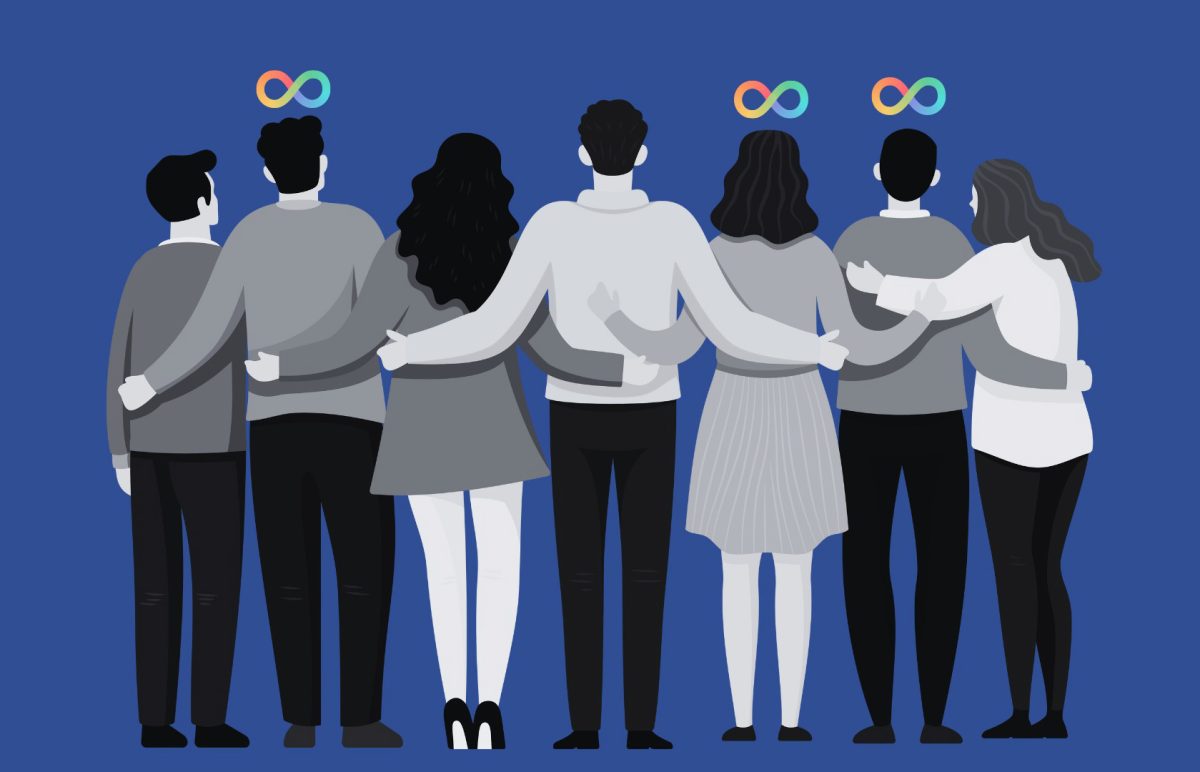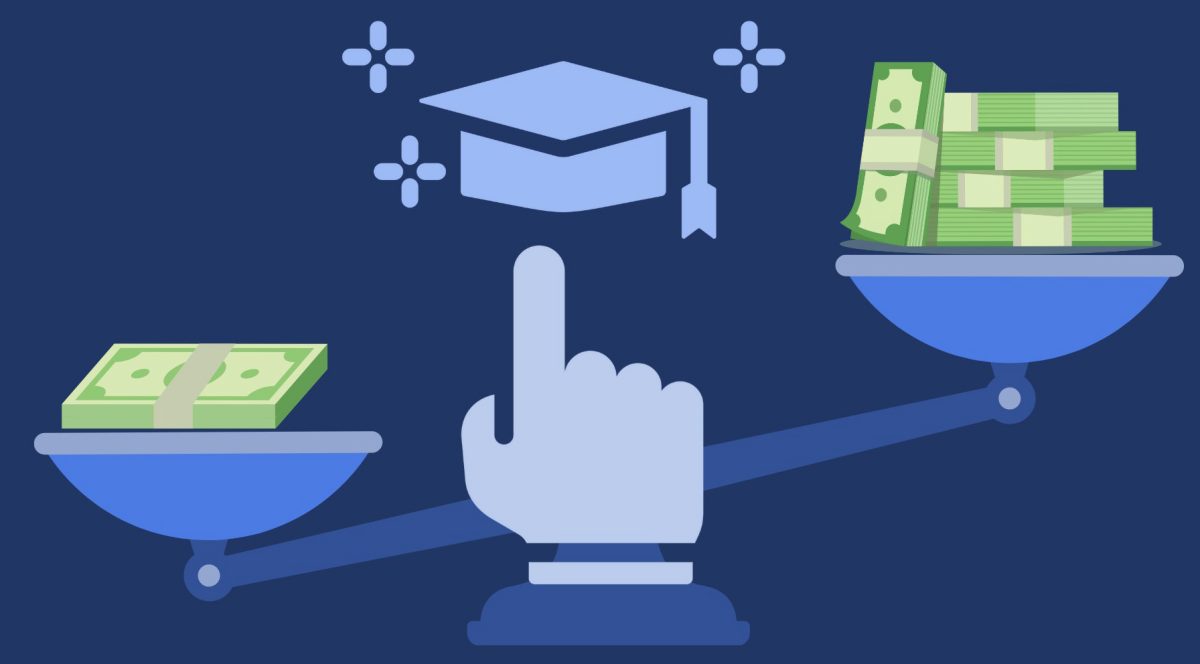Photo: Connor McCourtney
Amid snacking on brownies and fruit, the discussion around the table in Medbury Honors Lounge on Monday turned to “leather daddies” and “dykes on bikes.”
Members of the Drake University staff and student body were invited to join in the discussion about how members of the lesbian, gay, bisexual and trans gender community are portrayed in the media. The faculty members around the table were Sentwali Bakari, dean of students; Lori Blachford, associate professor of journalism; Eunice Merideth, associate dean of the School of Education; Brian Adams-Thies, assistant professor of anthropology; Joan McAlister, assistant professor of rhetoric; and Tasha Stiger, director of campus programming.
The president of Rainbow Union, La’Cee Groetken, started off the discussion by asking what the general impressions of LGBT members are in the media.
Adams-Thies then asked how exactly the members of the discussion were defining “queer media.”
“Is Lady Gaga actually queer,” he said. “What does queer mean in this context?”
“I don’t really think there is a definition,” Groetken said.
Discussion then quickly turned to television channels that cater to the LGBT community such as Logo and here! in the U.S., versus Canada’s Pride TV.
Blachford told a short anecdote about how her cable provider used to carry here!, but then the channel disappeared because the service provider no longer carried it. She also said with Internet and the ability to live stream shows, people still are able to view those shows on the networks.
“We are able to access a lot more information. I think that has improved not only the community’s ability to see themselves represented in some ways, but to be part of a conversation,” Blachford said.
Merideth and Adams-Theis discussed the stereotypes in the LGBT community.
“Most people think most dancers are gay,” Merideth said. “In my first life I was a professional dancer, and I can tell you that probably a third of them are (gay), but two-thirds aren’t.”
Her experience with a dance instructor taught her that many straight dancers have to go through a lot to dispel those stereotypes that are directly applied to those who are dancers.
Stephanie Gibb-Clark, the vice president of RU, agreed with this aspect of performing arts. Gibb-Clark is a vocal performance major and attested to the fact that every year, those within the department try to find out which of the incoming first-year students are gay.
“I don’t know why it’s such a big deal, but it is,” Gibb-Clark said.
“Many times it’s unthinkable to freshman taking intro classes that someone could be an NFL football star and gay,” Adams-Theis said. He also said the stereotype of males in fine arts as being gay doesn’t help the public’s perception of other “unthinkable” members of the LGBT community.
Conversation then changed to how public figures who are members of the LGBT community are portrayed in mass media.
Blachford brought up Judy Bradshaw, who is the chief of police in Des Moines, and even though she is a lesbian, the media doesn’t just display her for her sexuality.
“If key folks like that are allowed to be invisible, then we’re less exposed,” Blachford said.
Groetken said that a roundtables during Pride Week helps show an inclusiveness that students can experience with faculty through discussions that need to happen.
“My opinion of queers in the media is that there is some really positive and some really negative,” she said. “It’s a good versus evil kind of thing.”

